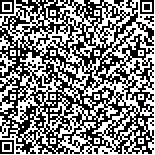| 引用本文: |
周德生,谭惠中.基于开阖枢理论辨治自主神经疾病——中医脑病理论与临床实证研究(九)[J].湖南中医药大学学报,2019,39(9):1053-1060[点击复制] |
|
| |
|
|
| 本文已被:浏览 2122次 下载 553次 |
| 基于开阖枢理论辨治自主神经疾病——中医脑病理论与临床实证研究(九) |
| 周德生,谭惠中 |
| (湖南中医药大学第一附属医院神经内科, 湖南 长沙 410007;湖南中医药大学, 湖南 长沙 410208) |
| 摘要: |
| 开阖枢理论是中医基础理论的组成部分。以三阴三阳分开阖枢,自主神经功能与经脉脏腑气化的开阖枢功能表现类似。开阖枢理论总结了疾病特殊的传变规律,可以指导自主神经疾病的临床辨治。通过神经源性体位性低血压、头部多汗症、自主神经功能不全、术后自主神经功能障碍、交感神经型颈椎病5个医案,阐述自主神经疾病的病机特征为枢机障碍,神机失用;开阖枢同病,而表现为偏于开折、阖折、枢折状态。治疗上必须着眼气化,整体燮理,邪正兼顾;调理法包括身心调理、饮食调理、方药调理之类,并加强及时有效的对症治疗。方药调理治疗的关键点在于养神安神、疏通经隧、双向调节、整体燮理,才能枢转神机。 |
| 关键词: 自主神经疾病 自主神经功能障碍 开阖枢理论 枢转神机 |
| DOI:10.3969/j.issn.1674-070X.2019.09.001 |
| 投稿时间:2019-04-30 |
| 基金项目:国家自然科学基金项目资助(81874463);湖南省科技厅科技创新平台与人才计划(2017SK4005);湖南省中医药管理局资助项目(201824)。 |
|
| Diagnosis and Treatment of Autonomic Nervous Diseases Based on Kaiheshu Theory and Encephalopathy in Traditional Chinese Medicine and Clinical Empirical Study (IX) |
| ZHOU Desheng,TAN Huizhong |
| (Department of Neurology, The First Hospital of Hunan University of Chinese Medicine, Changsha, Hunan 410007, China;Hunan University of Chinese Medicine, Changsha, Hunan 410208, China) |
| Abstract: |
| Kaiheshu theory is an integral part of the basic theory of traditional Chinese medicine. Classify the Kaiheshu according to three Yin and three Yang. The function of autonomic nervous function is similar to that of the Kaiheshu in Qi transformation of meridians and viscera. The Kaiheshu theory summarizes special laws of disease transmission and can guide clinical diagnosis and treatment of autonomic nervous diseases. This paper describes characteristics of pathogenesis in autonomic nervous diseases through 5 cases of neurogenic orthostatic hypotension, head hyperhidrosis, autonomic dysfunction, postoperative autonomic dysfunction, and sympathetic cervical spondylosis. The characteristics are pivot mechanism disorder and spiritual mechanism dysfunction; and if disease involves Kaiheshu, the manifestation tends to the state of Kaizhe, Hezhe, or Shuzhe. The treatment must focus on Qi transformation, overall treatment, and taking both evil and healthy qi into consideration. The methods include physical and mental regulation, diet regulation, prescription regulation, and strengthening timely and effective symptomatic treatment. The key point of prescription regulation is nourishing the spirit and tranquilization, dredging channels, two-way adjustment, and overall treatment, in order to pivot spiritual mechanism. |
| Key words: autonomic nervous disease autonomic dysfunction Kaiheshu theory pivoting spiritual mechanism |
|

二维码(扫一下试试看!) |
|
|
|
|




